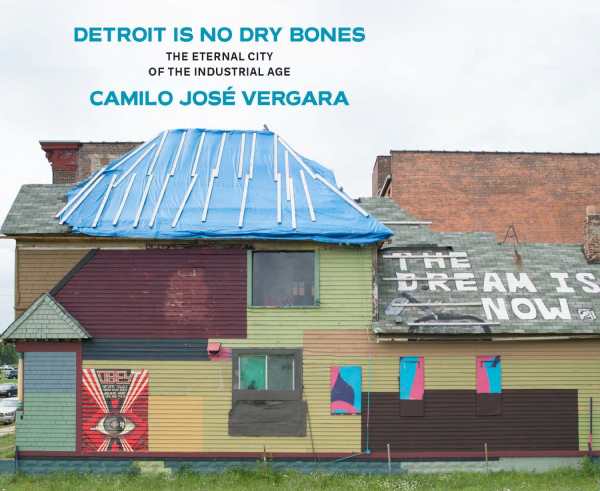Detroit is No Dry Bones
The Eternal City of the Industrial Age
Vergara not only depicts Detroit’s past and present but also considers the city’s future.
Photographer Camilo Jose Vergara has made his name capturing images of the decline of America’s cities. Perhaps no city has declined more from its heyday to the present than Detroit, and Vergara’s latest work, Detroit is No Dry Bones: An Eternal City of the Industrial Age, tells the story of how a once-thriving industrial center has become home to ruins, graffiti art, and empty spots of urban landscape, yet may also be on the road to recovery.
Some of the most effective photographs in Vergara’s book are those that show the same buildings over time. In a 1998 image, the mansions of Brush Park and the area around them still look lovely; by 2003, the same structures look dilapidated, several trees are gone, and desolation stretches in front of the distant downtown skyline. The old Statler Hotel remains vacant but standing, in a 2001 photo; ten years later, its site is an undeveloped plot. Vergara uses many contrasting images like these, which underscore that Detroit still looked like itself a relatively short time ago.
At the same time, Vergara avoids turning this into mere “poverty porn.” He is on record as wanting parts of cities like Detroit to be preserved as ruins, and there’s an appreciation of keeping the past alive evident throughout the book. He also takes an interest in the city’s art, with some images of statues or signage in the city, and others of the street art that now covers many of the old structures. Photos depict the classic light fixtures of the city’s public library, the Tudor architecture of an old mansion, and the Motown Museum, as well as murals of President Obama, Nelson Mandela, or Rosa Parks created with spray paint on abandoned buildings.
The photos are obviously the bulk of the book, and Vergara is a talented visual storyteller, but the book also features chapters that give the images context. Interviews with locals and stories about the way old buildings have been repurposed offer hints about Detroit’s revival. Detroit is No Dry Bones not only depicts the past and present but also considers the city’s future.
Reviewed by
Jeff Fleischer
Disclosure: This article is not an endorsement, but a review. The publisher of this book provided free copies of the book to have their book reviewed by a professional reviewer. No fee was paid by the publisher for this review. Foreword Reviews only recommends books that we love. Foreword Magazine, Inc. is disclosing this in accordance with the Federal Trade Commission’s 16 CFR, Part 255.

